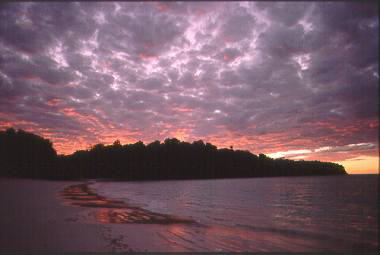|
|
|

Nosy Iranja is a small island with important turtle nesting beaches that has been developed as a hotel complex. The Radama Islands are inhabited, and used for agriculture. The Nosy Hara archipelago islands are uninhabited, and have both important coral reefs and unique terrestrial biodiversity, as well as being important for turtle nesting.
During the course of the project, we moved from island to island, spending four to ten days on each, camping on the beaches. The team was made up of four students from Oxford University, Great Britain, two students from the University of Antananarivo, Madagascar, and two students from the Marine Institute, Toliara, Madagascar. During the course of the project, we moved from island to island, spending four to ten days on each, camping on the beaches.


The team was made up of four students from Oxford University, Great Britain, two students from the University of Antananarivo, Madagascar, and two students from the Marine Institute, Toliara, Madagascar.
For all sites, we recorded evidence of marine turtle nesting activity, and tagged turtles that came up to nest. In the Nosy Hara region, and on Nosy Iranja, females arrive to nest regularly during this season, and turtle tracks were visible on most beaches. Some islands, like Nosy Vaha in the Nosy Hara archipelago, or Nosy Iranja, are visited mostly by Green turtles. Others, like Nosy Hara, by mostly Hawksbills. Yet other islands showed much less activity. From this work we were able to identify important nesting beaches. By quantifying carcasses found on the beach we were also able to investigate the degree of threat to the turtles in particular areas. This data was made available to WWF-Madagascar to help target the activities of their nascent turtle conservation programme.
On Nosy Iranja, we also trained guides to both tag and collect data, and to allow tourists to see the turtles with minimum disturbance. We also developed an Interpretation Centre. All the above was funded by the Hotel Iranja. The guides are continuing with the work in our absence, and will do for the foreseeable future.
The Nosy Hara archipelago and the Radama Islands are both being considered for development as protected areas. In both, we undertook socio-economic surveys of the inhabitants, geared to understanding needs and requirements that might conflict with conservation initiatives. In both areas, emphasis was put on the exploitation of marine resources, as it is this domain that is particularly being considered for protection. A preliminary report of our findings has already been submitted to the relevant authorities. The full report will follow soon.
